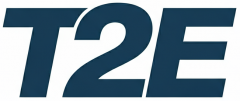The final phase of our Technology Strategy build process entails crafting a well-defined roadmap that outlines the proposed solutions for supporting the organization’s business direction. This section is crucial for tech executives as it outlines how solutions will meet business needs, including timing and cost estimates. It’s a key tool for aligning tech initiatives with organizational goals.
9. Develop Roadmap – initiatives with priorities, estimates, ownership and schedules
To advance, identify specific, measurable actions to signal completion of the strategy building. The implementation plan will include strategic initiatives aligned with the organization’s goals. Analyzing the gap between current and future states guides the identification of these initiatives. Organizing them cohesively is crucial.
- Dependencies and priorities: initiatives are in priority order so that criticality can be easily identified. From a criticality perspective, this means the most important initiatives that will lead to the ultimate successful outcome as determined by the business.
- Budget estimates: including people, tools, and efforts. Creating a realistic budget is an essential step for any project. It involves estimating the costs associated with people, tools, and efforts required to complete the projects successfully.
- Assigned ownership to ensure accountability. In project management, assigning ownership is crucial. Each task must have a specific person or team responsible. Lack of clarity on ownership leads to confusion and reduced accountability in projects.
- Schedules of initiative durations, and when value can be realized. Once the strategy is in place, numerous projects and initiatives will run concurrently, each with their own deadlines. How can you anticipate when the value from these initiatives will materialize? Enter initiative duration schedules. These documents outline project timelines, key milestones, and deliverables, aiding in resource planning, management, and return on investment projections.
In conclusion, the roadmap provides a clear path to actualize the goals outlined in the mandate, strategic objectives, and target model. Each initiative aligns with a project, serving as the bridge between strategy management and program management. The Program Management Office, responsible for program management, meticulously outlines project plans for each initiative.
You may also like:





